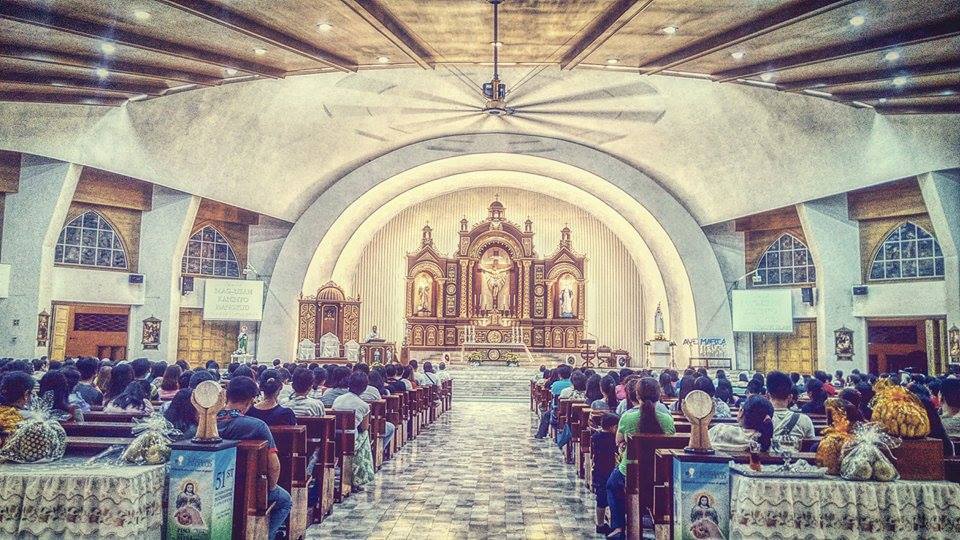 San Pedro Cathedral
San Pedro Cathedral
Key Stories of our San Pedro Cathedral
St. Peter is the first pope.
His successor Pope Francis declared 2015 as Year of Consecrated Life (YCL), and this must be celebrated throughout the world.
As it turns 167 years old on June 29, DC Herald takes you back down memory lane in honoring the missionary endeavors of our religious congregations, alongside the diocesan efforts which brought into fruition of what is today’s oldest Church in Davao — San Pedro Cathedral.
From a Nipa and Bamboo Chapel
The Recoletos (1848)
The Cathedral’s beginning can be traced back to 1848, with the arrival of the Missionaries of the Discalced Order of St. Augustine (Recoletos).
Fr. Francisco Lopez of the parish of Siargao, was the first priest at the Yglesia Mision de Cabezera de Bergara dela Nueva Guipuzcoa. For many years, the Recollect Fathers labored hard to expand the number of believers under their care. They battled diseases and other hardships as they continue in the task of sustaining the young church. The ministry of the Recoletos also went to Sigaboy in the East and to Bansalan and Malalag in the South.
Mission Station to a Parish
On January 30, 1857, the once called Yglesia Mision de Cabezera de Bergara dela Nueva Guipuzcoa became Parroquia de San Pedro Apostol de Davao. The first Parish Priest was Rev. Fr. Toribio Sanchez, a Recollect Priest, who is also the Parish priest of St. Francis Xavier Parish of Pundaguitan. When the Recollects left missionary works in the area, the care of the church was given to the Jesuits.
To the Jesuits (1860 -1937)
After the Recollect Fathers left their missionary assignment, the Jesuits took over the needs of the church. Their ministry extended far beyond the political boundaries of the city of Davao. This period marked the rapid growth of the settlement in terms of population. The influx of settlers from Luzon and the Visayas added to the population. The missionaries, presumably sensing the growth of the churchgoers, initiated the construction of a bigger church. This took five years to complete.
To the PME Fathers of Canada (1938)
The arrival of the PME (Foreign Mission Society of Quebec) fathers headed by Fr. Clovis Thibault, came after the request of Bishop Luis del Rosario, Bishop of Zamboanga.
Parish to a Prelature Nullius
On December 17, 1949, Davao became independent from the Diocese of Zamboanga. It became a Prelature Nullius*, and Fr. Clovis Thibault became its Apostolic Administrator. In 1955, he was ordained bishop and became Prelate Ordinary.
*Territorial prelature, does not belong to any diocese and is considered a particular church. The territorial prelate is sometimes called a prelate nullius from the Latin nullius diœceseos, prelate “of no diocese,” meaning the territory falls directly under the jurisdiction of the pope and is not a diocese under a residing bishop.
Prelature Nullius to a Diocese
The Prelature of Davao became a full-fledged Diocese with Bishop Clovis Thibault as the First Residential Bishop on July 11, 1966.
To the Diocesan clergy (1969)
The Diocesan Clergy started taking care of the local church. The PME fathers formally handed the local church to the Diocesan Clergy in 1969.
Diocese to an Archdiocese
The Diocese of Davao was elevated to an Archdiocese with Archbishop Thibault as the first archbishop on June 29, 1970. On the same year, Bishop Mabutas became the Co-adjutor Archbishop and eventually became the Archbishop of Davao on the year 1972 upon the resignation of Archbishop Thibault.
Archdiocese towards Holiness
Due to the creation of daughter parishes that reached as far as Lasang in the north, Toril in the south and Calinan in the southwestern portion of the City of Davao, San Pedro Cathedral Parish now has 31 Gagmay’ng Kristohanong Katilingban (GKK), mostly are situated in Trading, Bucana areas.
At its 167th fiesta celebration, the shepherds of the flock who are manning the day-to-day activities of the parish are the following: Msgr. Leonardo B. Vicente (Parish Priest); Fr. Amando B. Arroyo, Fr. Garry Glenn T. Yba, (Parochial Vicars) and Rev. Raul Nieves. (Leenard R. Baquial)



No Comments